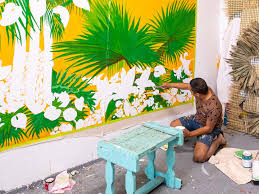What it was really like to go to art school
When people imagine art school, they often picture a dreamy, free-spirited world where creativity flows endlessly, and students spend their days painting or sculpting in sunlit studios. While parts of this idealized vision hold true, the reality of attending art school is far more complex, demanding, and transformative.
From the very first day, art school challenges you to question everything you thought you knew about creativity. Many students enter with a sense of confidence in their abilities, only to realize how much they still have to learn. Professors and peers will critique your work with a level of honesty that can feel brutal but is essential for growth. You’ll hear phrases like “What are you trying to say with this?” or “How does this fit into the larger context of art history?” more often than you’d expect. These questions push you to think critically about your work, not just as a product but as a form of communication.
Time management becomes one of the biggest hurdles. Unlike traditional academic programs, where you might have set lecture times and exams, art school often operates on a project-based system. This means juggling multiple deadlines for assignments that require hours—sometimes days—of focused effort. You’ll find yourself pulling all-nighters in the studio, fueled by coffee and sheer determination, as you strive to perfect that one piece that’s been eluding you.
The studio environment itself is a world of its own. It’s equal parts collaborative and competitive. On one hand, you’re surrounded by incredibly talented peers whose creativity can inspire you to push your boundaries. On the other, it’s easy to fall into the trap of comparing your progress to theirs. Learning to balance admiration and self-assurance becomes a crucial skill. Over time, you come to understand that each artist’s journey is unique and that comparison can stifle rather than fuel creativity.
Art school also teaches you resilience. Not every piece will turn out the way you envisioned, and not every idea will resonate with your audience. There will be moments of self-doubt, frustration, and even burnout. But these challenges are what shape you as an artist. Learning to embrace failure and see it as a stepping stone rather than a roadblock is one of the most valuable lessons art school imparts.
Another surprising aspect is how much you’ll learn outside your chosen medium. Whether it’s an elective in ceramics, an art history lecture, or a workshop on digital tools, art school encourages exploration. These experiences often inform and enhance your primary practice, giving you a richer, more multidimensional approach to your work.






Comments
Post a Comment